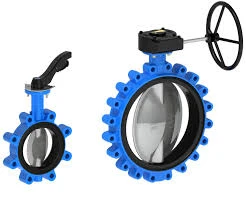Dec . 26, 2024 11:01 Back to list
Understanding Non-Return Swing Check Valves and Their Applications in Fluid Systems
Understanding Non-Return Swing Check Valves Design, Functionality, and Applications
Non-return swing check valves play a pivotal role in many fluid systems, ensuring that media flows in one direction while preventing backflow. This article explores the design, functionality, and diverse applications of non-return swing check valves, highlighting their importance in various industrial settings.
What is a Non-Return Swing Check Valve?
A non-return swing check valve, often referred to simply as a swing check valve, is a type of valve that automatically prevents the backflow of fluids within a pipeline. The key distinguishing feature of this valve is its hinged disc that swings open with the fluid flow and closes when the flow attempts to reverse. This design allows it to effectively manage the direction of fluid flow, protecting equipment and maintaining system integrity.
Design and Components
The basic design of a non-return swing check valve consists of several key components
1. Body The main structure that houses the valve, typically constructed from materials like stainless steel, bronze, or PVC, depending on the application and the type of fluid being controlled.
2. Hinged Disc The disc is the heart of the valve. It swings on a hinge, permitting flow in one direction and sealing off the reverse flow.
3. Seat The seat is the area against which the disc seals to prevent backflow. Proper seating is crucial for minimizing leakage.
4. Stem and Hinge These components facilitate the movement of the disc, allowing it to open and close smoothly based on the fluid flow conditions.
How Non-Return Swing Check Valves Work
The operational principle of a non-return swing check valve is relatively straightforward. When fluid flows through the valve in the intended direction, it exerts pressure against the disc, causing it to swing open and allow the fluid to pass. Once the flow diminishes or reverses, the disc returns to its closed position, aided by gravity and the fluid's weight, effectively blocking any backward flow.
This functionality is essential in various systems to prevent scenarios where backflow could lead to contamination, damage equipment, or disrupt processes.
Advantages of Using Non-Return Swing Check Valves
non return swing check valve

Non-return swing check valves offer numerous advantages
1. Simplicity and Reliability Their straightforward design results in high reliability and minimal maintenance requirements.
2. Low Pressure Drop Compared to other check valve types, swing check valves typically exhibit lower pressure drops, ensuring that system efficiency remains high.
3. Versatile Applications They can be used across a range of industries, including water treatment, oil and gas, power generation, and HVAC systems.
4. Durability Constructed from robust materials, these valves are designed to endure harsh conditions and extended operational periods.
Applications of Non-Return Swing Check Valves
The adaptability of non-return swing check valves makes them suitable for various applications
1. Water Supply Systems They are commonly utilized in municipal water supply systems to prevent backflow that could contaminate the water supply.
2. Wastewater Management In wastewater treatment, these valves help maintain system pressure and prevent foul water from re-entering the treatment facilities.
3. Industrial Processes They are found in numerous industrial applications to ensure the uninterrupted flow of fluids and protect equipment from reverse flow damage.
4. Fire Protection Systems In fire suppression systems, these valves prevent water from flowing back into the supply lines, ensuring that adequate pressure is maintained for firefighting efforts.
Conclusion
Non-return swing check valves are critical components in fluid management systems. Their simple yet effective design ensures reliable flow direction control, safeguarding systems against the harmful effects of backflow. With applications spanning water treatment, industrial processes, and more, these valves contribute significantly to operational efficiency and safety. Understanding their functionality and applications empowers engineers and technicians to make informed decisions about fluid control systems, ultimately enhancing their reliability and performance. As technology evolves, innovations in valve design and materials will continue to improve the efficiency and effectiveness of non-return swing check valves, solidifying their role as integral components in modern engineering systems.
Share
-
Reliable Wafer Type Butterfly Valves for Every IndustryNewsJul.25,2025
-
Reliable Flow Control Begins with the Right Ball Check ValveNewsJul.25,2025
-
Precision Flow Control Starts with Quality ValvesNewsJul.25,2025
-
Industrial Flow Control ReliabilityNewsJul.25,2025
-
Engineered for Efficiency Gate Valves That Power Industrial PerformanceNewsJul.25,2025
-
Empowering Infrastructure Through Quality ManufacturingNewsJul.25,2025